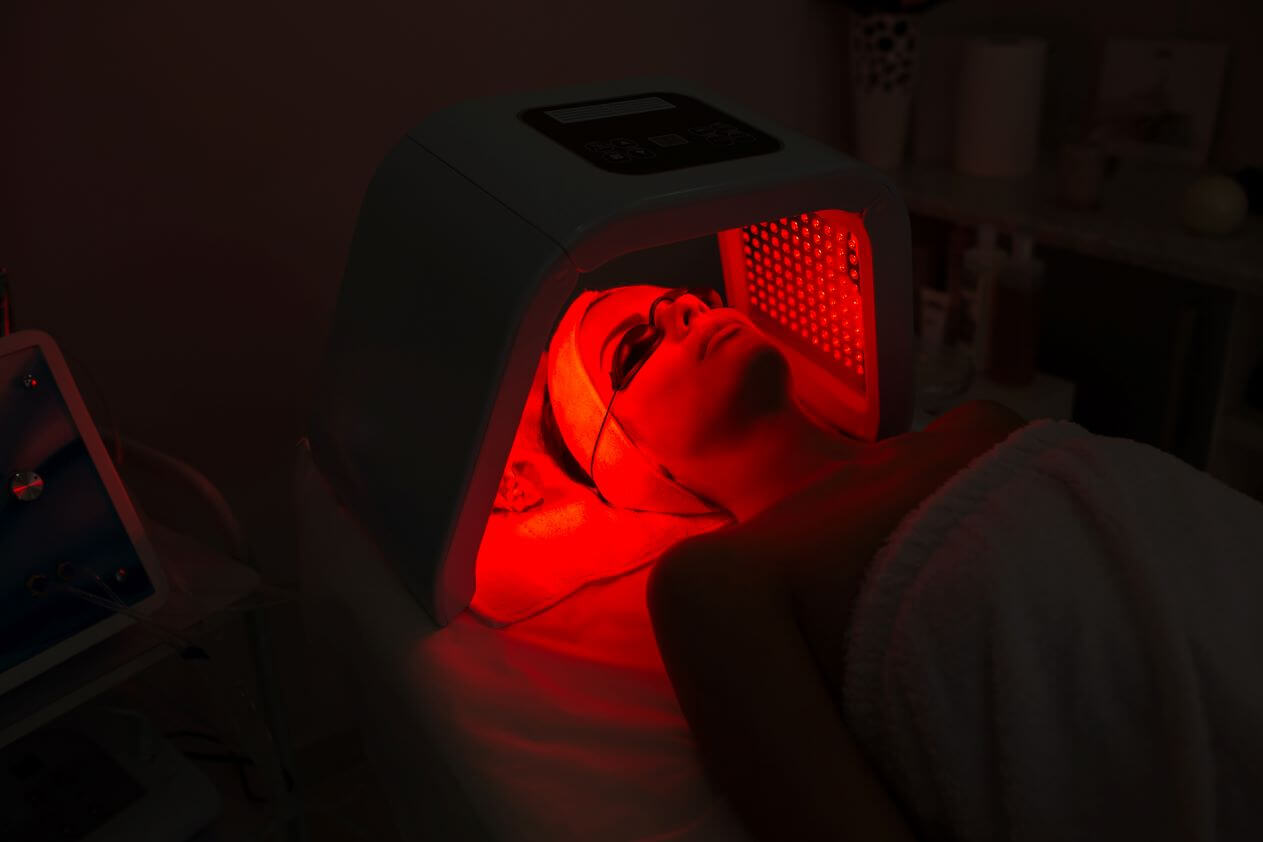Red light therapy is considered one of the newest and most innovative skin rejuvenation procedures available. According to Dr. Jean Charles of U.S. Dermatology Partners in Cedar Park, Texas, “Red light therapy is so new that the dermatologic community hasn’t even settled on one name for it. Various research studies refer to it as low-level laser therapy, cold laser therapy, phototherapy, photomodulation, and a variety of other names. While dermatologists and research scientists haven’t decided on one name for this cutting-edge treatment, red light therapy is quickly gaining popularity thanks to the skin-rejuvenating results researchers are noting in research studies. Dermatologists don’t often recommend treatments that are considered experimental or under development, but red light therapy is a minimally invasive, safe treatment that has shown significant improvement for many people, so dermatologists have started utilizing and recommending this procedure.” Keep reading to learn more from Dr. Charles about what red light therapy is, how it’s used, and skin rejuvenating results.
What is Red Light Therapy?
Red light therapy is a skin rejuvenating treatment that uses low-level red light wavelengths to treat specific skin conditions, wrinkles, redness, acne, and other signs of skin aging. Research started in the 1990s with research into the use of light-emitting diode (LED) technology. LED light was used to grow plants in space, creating photosynthesis. Scientists who worked with these plants and intense red LED lights also noticed that wounds on their hands were healing more quickly through repeated red light exposure. Thus began research into the potential medicinal uses of red light therapy for a variety of health conditions, which is already widely medically accepted in its use as photodynamic therapy.
The Science Behind the Treatment
Red light therapy works by penetrating into the skin and increasing mitochondrial energy. Energizing mitochondria cells improves cellular function and helps surrounding cells to repair themselves. Additionally, Dr. Charles says, “The scientific evidence of the increase in energy for mitochondrial cells is fairly sound and backed by research. Some additional benefits have been seen but are not definitively linked to red light therapy, including reduced inflammation, increased collagen levels, and improved blood flow. While additional research is needed to prove the connection between red light therapy and the benefits patients see after receiving this non-invasive treatment, many people have reported these benefits.”
Benefits of Red Light Therapy
Early research indicates that red light therapy benefits include the following:
- Promotes faster wound healing.
- Repairs cells and tissues.
- Stimulates hair growth in alopecia sufferers.
- Improves psoriasis, rosacea, acne, and eczema side effects.
- Diminishes the size of burn scars, stretch marks, sun damage, and other irregular skin textures.
- Diminishes fine lines and wrinkles through the production of healthy collagen.
- Creates an even, healthy skin tone and texture.
- Alleviates inflammation and irritation.
- Reduces cancer treatment side effects.
Common Uses in Healthcare
In addition to dermatologic uses, red light therapy has also proven effective in managing neuropathic pain, providing short-term relief for carpal tunnel syndrome, preventing further vision loss for those who are near-sighted, and it has even been used to improve cognition for those with dementia and Alzheimer’s disease. Health benefits related to red light therapy are still being researched and uncovered.
What to Expect During a Session
During red light therapy, skin is exposed to low levels of red light from lamps, lasers, and other devices. The light is targeted to address specific areas of concern. Depending on the size of the area being treated, treatment sessions last between 10 and 30 minutes. Because the heat is very low, the procedure is considered comfortable, and most patients don’t experience any discomfort during or after treatment. Initially, treatment will take place several times a week. After the desired results are achieved, maintenance sessions may be scheduled to maintain the results for those with chronic skin conditions or those using red light therapy for anti-aging benefits.
Safety and Side Effects
This procedure is considered safe. Unlike tanning beds and other types of light therapy that expose skin to damaging UV light, red light therapy isn’t known to cause cellular damage. In rare cases, people reported skin redness, burns, or blistering of skin. In the majority of cases, these negative effects were attributed to using the unit for too long or a malfunction within the red light application device. Like any type of light therapy, there is also a risk of damaging the eyes and vision, so it’s important to follow eye protection guidance carefully. Dr. Charles says, “Any procedure that is still considered emerging or in development will have associated risks because regulations don’t exist yet to ensure safety. Discuss potential concerns with your dermatologist and ensure you let them know your full health and medical history, any medications you’re taking, past adverse response to treatments, and anything else that may contribute to a negative response to red light therapy.”
Choosing a Red Light Therapy Provider
Because red light therapy is still being developed as a dermatologic treatment, it’s important to choose a qualified professional to administer these treatments. Make sure you are going to a dermatologic office for red light therapy rather than a medi-spa or other location where those who provide treatments may not have the high level of training and experience required of dermatologists. Ask your red light therapy provider what their credentials are, what training they have in using red light therapy, and what precautions they take to minimize potential risks.
Consider an Innovative Skin Rejuvenation Solution
According to Dr. Charles, “At the end of the day, red light therapy is still considered a developing technology. For this reason, it’s important to discuss the use of this procedure carefully with your dermatologist. While early indications suggest this treatment will be beneficial, it may not be the best option for every patient.”
Consult with a Dermatologist
Interested in exploring the benefits of red light therapy? Contact our specialists to learn more and schedule your session today. We make it simple and straightforward to get started working with us. You’ll just need to take a few moments to complete our online scheduling request form. From there, our local team members will review your request and get in touch to finalize the details of your visit.
Find a location near me
or


